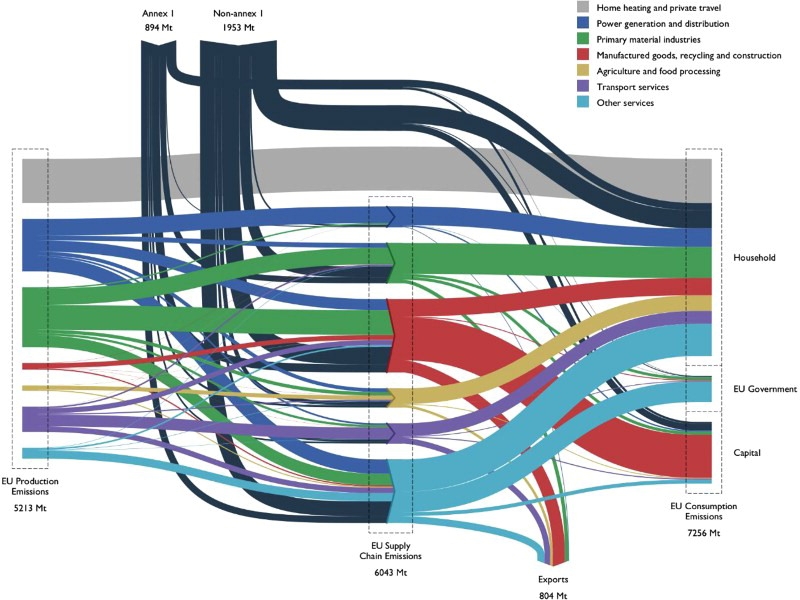Embodied emissions (similar to embodied energy) is an interesting perspective on the environmental impact of products we use. It takes into account the full life-cycle of the product and aggregates the emissions produced from raw material extraction, from the actual manufacturing, from the transports along the supply chain, and from the disposal of the product after use.
In many cases ’emissions’ is reduced to greenhouse gas emissions (GHGs) and the impact on climate change caused along the product’s life cycle. In this case we could colloquially also call it the ‘carbon rucksack’ of the product.
Kate Scott from the Sustainability Research Institute, School of Earth and Environment, University of Leeds (UK) in her article ‘Extending European energy efficiency standards to include material use: an analysis’ suggests the European Union should – in addition to its energy efficiency policies – add consideration of material efficiency of products to their climate change strategy. GHGs are considered a lead indicator for material efficiency, as “material-intensive manufactured products … offer significant scope for emissions reductions along product supply chains.
This Sankey diagram of supply chain emissions associated with global product flows of the EU is presented.
Source: Kate Scott, Katy Roelich, Anne Owen & John Barrett (2018) Extending European energy efficiency standards to include material use: an analysis, Climate Policy, 18:5, 627-641, DOI: 10.1080/14693062.2017.1333949 distributed under Creative Commons Attribution License.
The diagram doesn’t show much detail as to the individual stream and relies heavily on color coding. Only group sums are shown. Data is for the year 2007. Flows are in Mt (megatonnes) CO2-equivalents embodied as emissions in the products.
“Production emissions in the EU in 2007 were 5,213 MtCO2e, with the width of each flow on the left-hand side of Figure 1 representing production emissions by sector, the conventional accounting approach. In the same year, the EU’s consumption-based emissions, the right-hand side of Figure 1, were 39% higher, at 7,256 Mt due to the EU’s trade balance. Emissions embodied in EU imports were 2,847 Mt and emissions embodied in their exports were 804 Mt, meaning that the EU is a net importer of 2,043 MtCO2e (imports–exports).”
The black streams from the top represent embodied GHG emissions from raw materials, finished products or product components imported into the EU.
Read the full article here.
